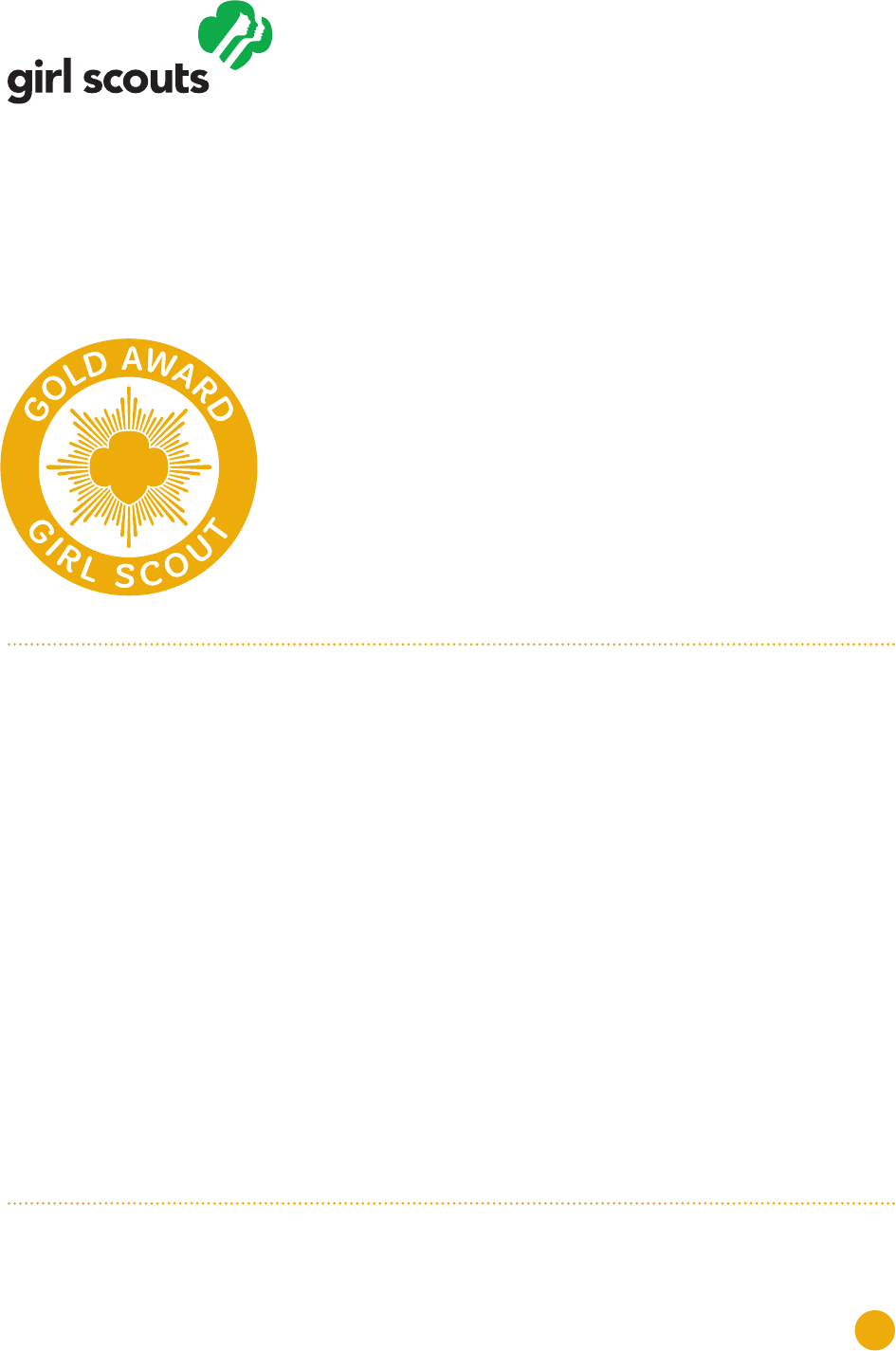
1
The Girl Scout Gold Award is the mark of the truly remarkable. Through
pursuing the Gold Award, Girl Scouts change the world by tackling issues
they are passionate about to drive lasting change in their communities and
beyond while they learn essential skills that will prepare them for all aspects
of life. As a bonus, the Gold Award opens doors to a variety of scholarships,
preferred admission tracks for college, strong networking and amazing career
opportunities, and much more.
This guide offers a comprehensive overview of everything from planning to
proposals and teamwork to time logs. So, whether you’ve been dreaming of your
Gold Award since you were a Daisy or you’re a new member in high school looking
to make a difference, this guide is for you. Let’s get going and let’s Go Gold!
How to Become a Gold Award Girl Scout
Your Guide
to Going Gold

2
Contents
Part I: The Gold Award Dened
▶ The benets of becoming a Gold Award Girl
Scout | 3
▶ Key elements of the Gold Award | 4
▶ What does “take action” really mean? | 4
▶ What’s the difference between
community service and a
Take Action project? | 4
▶ What is a root cause? | 5
▶ How do I include a national and/or global
link in my project? | 5
▶ How do I show leadership in my project? | 6
▶ What does a sustainable project look
like? | 6
▶ How do I measure my impact? | 7
© 2020 Girl Scouts of the USA.
All rights reserved. No part of this publication may be reproduced, distributed, or transmitted in any form or by any means, electronic or mechanical methods,
including photocopying, recording, or by any information storage or retrieval system, now known or hereinafter invented, without the prior written permission of
Girl Scouts of the United States of America, except in the case of brief quotations embodied in critical reviews and certain other noncommercial uses permitted
by copyright law. For permissions requests, write to Girl Scouts of the United States of America at the address below or visit the www.girlscouts.org website to
access permission request forms.
First published in 2020 by
Girl Scouts of the United States of America
420 Fifth Avenue, New York, NY 10018-2798
www.girlscouts.org
Part 2: Achieving Your Gold Award
▶ How do I know I’m ready? | 9
▶ How much time does it take? | 9
▶ What is the GoGold web app? | 10
▶ What are the #1 tips to help me succeed? | 11
▶ What are the seven steps to the Gold
Award? | 12
▶ Step 1: Choose an issue | 12
▶ Step 2: Investigate | 12
▶ Step 3: Get help | 14
▶ Step 4: Create a plan | 15
▶ Step 5: Present your plan | 15
▶ Step 6: Take action | 16
▶ Step 7: Educate and inspire | 16
▶ Congratulations—you’re a Gold Award
Girl Scout! | 16
▶ Share your accomplishment with the
world! | 17
▶ Our resource roundup for Girl Scouts | 19
▶ Find your council’s Gold Award page | 20
CONTACT US
Girl Scouts of the USA
goldaward@girlscouts.org
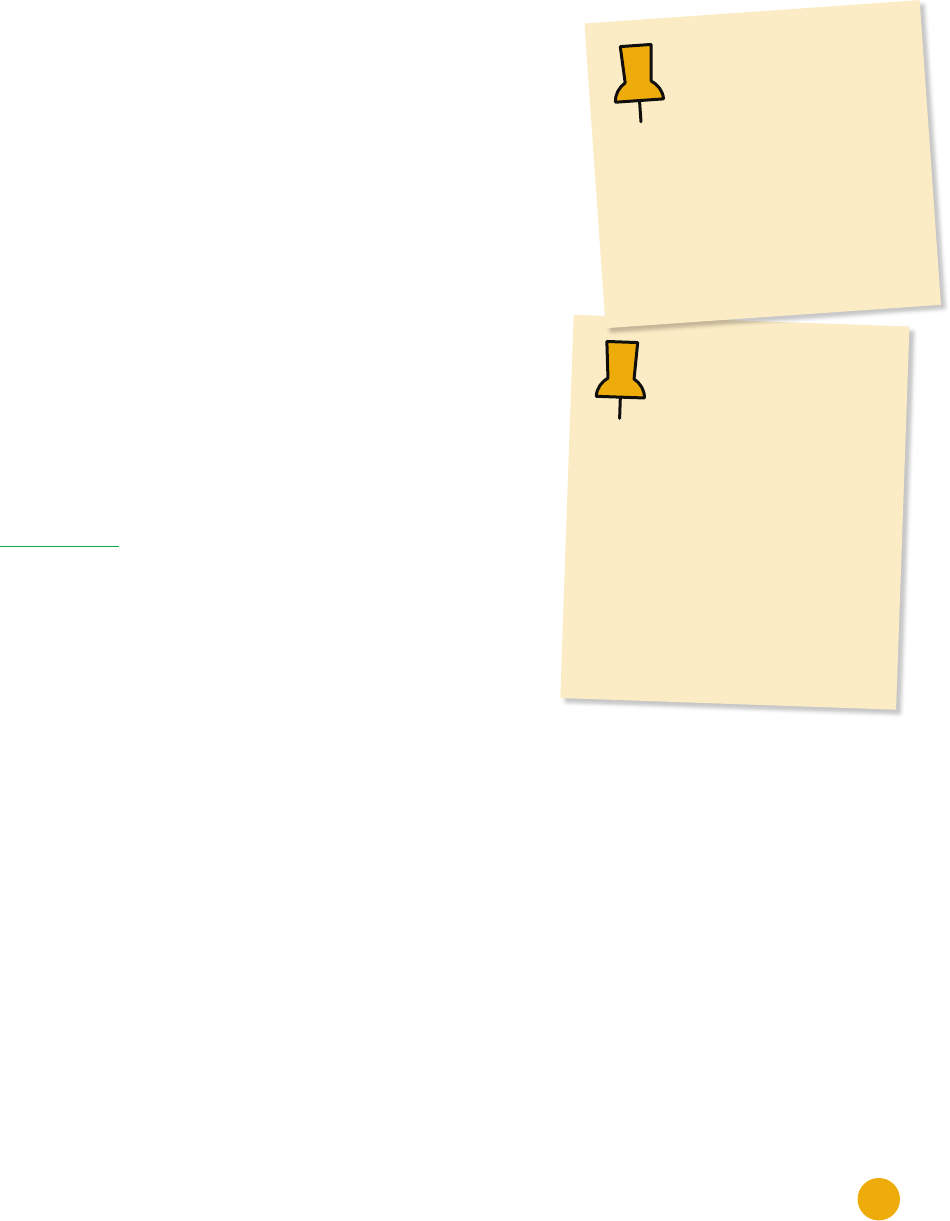
3
Part 1: The Gold Award Dened
Curious about the Gold Award? Read on to learn more about what it means and how you’ll lead lasting
change in your community.
The benets of becoming
a Gold Award Girl Scout
When you become a Gold Award Girl Scout, you delve deep into your
passions, ex your problem-solving muscle, stand up for what you
believe in, inspire others, and make a difference. It’s an opportunity
to do something more and to set your sights on true leadership.
Here are a few other reasons to Go Gold:
●Grow professional skills. Gold Award Girl Scouts become
pros in team building, problem solving, project planning,
and time management. These are invaluable skills that all
professionals need—and all people value. You can highlight
these experiences as you apply to schools, jobs, internships,
and other opportunities.
●Earn scholarships. Many universities and colleges award
scholarships to Gold Award Girl Scouts.
●Build your network. Gold Award Girl Scouts recruit and lead
teams to do amazing things! This experience will give you a
network of supporters that lasts a lifetime.
●Enlist at a higher pay grade when you join the military.
SOMETHING TO
REMEMBER: Once you’v
e
earned the Gold Award, yo
u
can proudly claim your Gold Awar
d
digital credential from Credly, o
ur
verication partner! Yo
u can
display it on your social me
dia
proles, including Linke
dIn. This
allows prospective employer
s,
universities/c
olleges, military
academies, and others to v
erify
your achievement simply b
y
viewing your prole.
SOMETHING TO
REMEMBER: Do this fo
r
you—not for anyone els
e!
This isn’t your parent’s or troo
p
leader’s project. The Gold Awar
d is
an opportunity to harness your
passion and put your ideas int
o
motion. It’s challenging. It’
s
immensely rewarding. And it’
s
entirely up to yo
u.
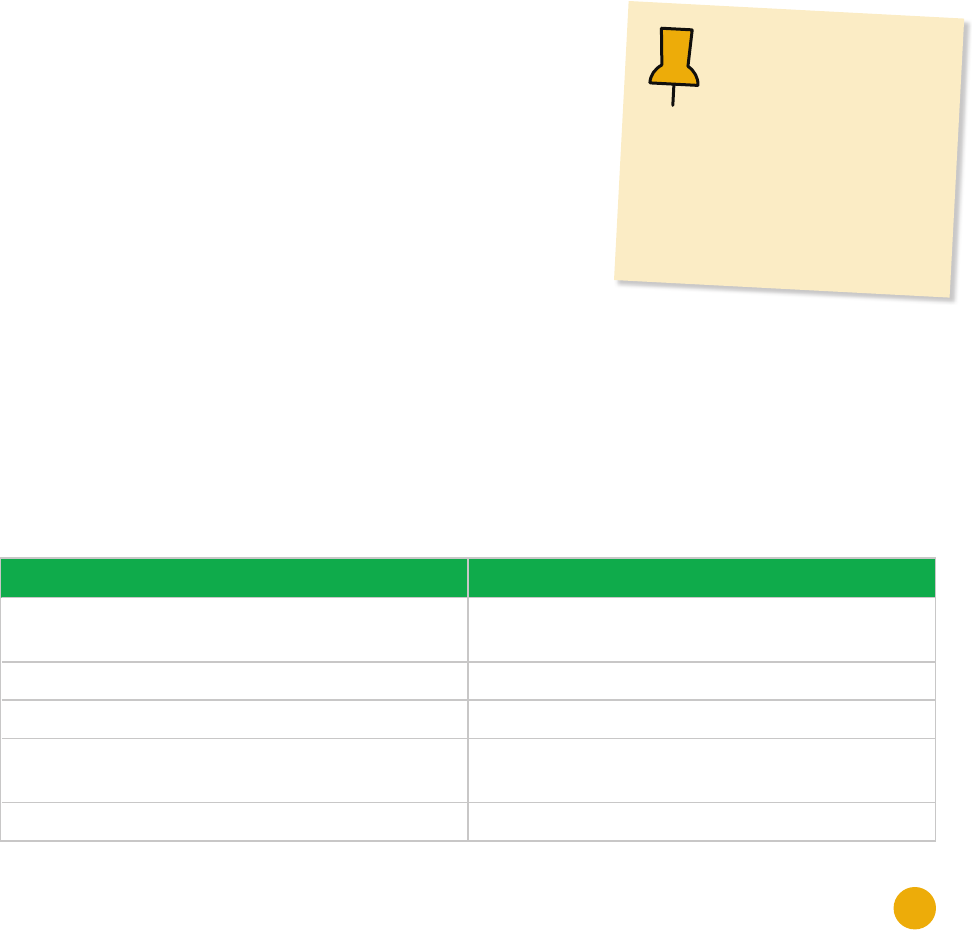
4
Key elements of the Gold Award
The Girl Scout Gold Award is a Take Action project that must include
ve elements. Your project must (1) address a root cause of an issue that
you feel passionate about that has a (2) national and/or global link. Through
your actions, you must demonstrate (3) leadership while also creating
(4) sustainable and (5) measurable impact.
What does “take action” really mean?
Taking action means working to understand the root cause of a problem so that you can develop a solution
that continues to address that issue—even after your Gold Award project has been completed. Simply put,
taking action goes beyond community service.
WHAT’S THE DIFFERENCE BETWEEN COMMUNITY
SERVICE AND A TAKE ACTION PROJECT?
Take Action and community service projects are different, and both
are essential to Girl Scouting. When you earn the Gold Award, you
are transformed from living the Girl Scout Law to bringing it to life!
Community service projects are acts of kindness and important
ways to help something or someone right now. They are commonly
“one and done” activities. Performing community service almost
always multiplies efforts that are already in place. Examples
include collecting food for an existing food pantry, providing
clothing or toiletries to people who have suffered a disaster, cleaning up a run-down playground,
or picking up trash at a park, forest, or beach.
Girl Scout Take Action projects address an issue by tackling the factors that cause or contribute to it. As
you may expect, these projects have a far-reaching impact. They are designed to change something for the
better—forever.
Use this table to help determine whether an idea is a community service or Take Action project.
Community Service Take Action
A short-term effort that helps something or someone
fulll an immediate need
A long-term project with sustainable and ongoing
impact that addresses a root cause of an issue
Done FOR the community Done WITH the community
Joining an existing effort to solve a problem Creating a unique initiative to address an issue
Done as part of an existing team (usually as a
volunteer)
Creating and leading your own team of volunteers
Working towards a goal that’s set by others Setting the goals and leading a team to achieve them
SOMETHING TO
REMEMBER: Colle
cting,
beautifying, decor
ating, and
cleaning can be part of a Tak
e
Action project; however thes
e
activities are not stand-alo
ne Gold
Award projects. Stay focused o
n
unique solutions with long-t
erm
relief.
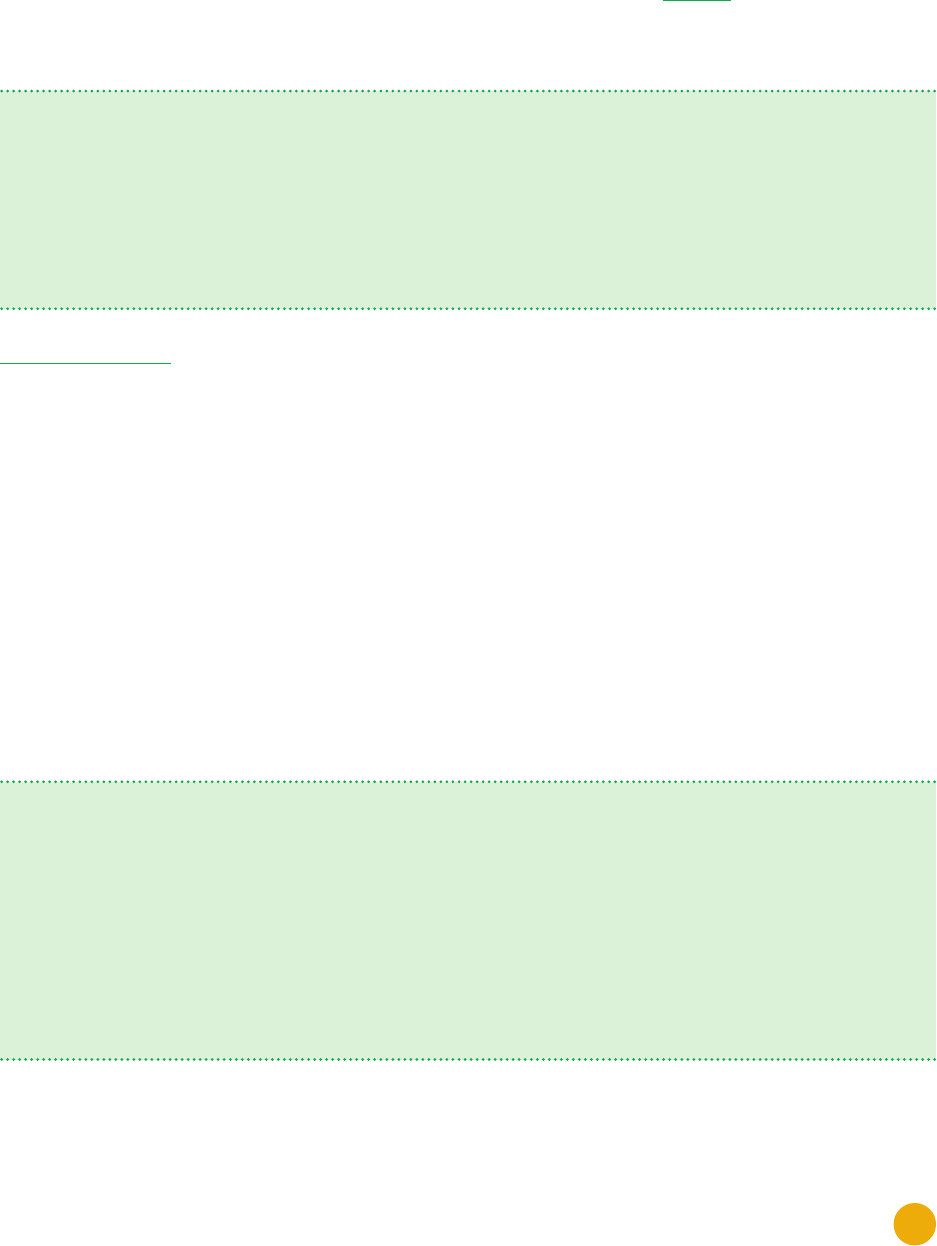
5
What is a root cause?
Root causes are an issue’s trigger—they identify why an issue is happening. Often, you’ll have to look for
the why in a lot of places in order to get to the root causes. Once you’ve identied your issue, you can
create a “mind map” in GoGold, the Gold Award web app (learn more about GoGold). This will help you
nd its root causes. A mind map can help you understand what triggers your issue and will help you look
further to nd the root causes of those triggers.
ROOT CAUSE EXAMPLE: Rachel is passionate about ocean conservation. She asks why ocean
pollution happens and lists several causes, including acid rain, soil runoff, and oil spills. She
remembers witnessing the harmful impact of a major oil spill in her local ecosystem and decides to
learn more about why oil spills happen. Rachel reaches out to experts and, after additional research,
learns that a lack of safety protocols for oil storage is one of the root causes. She chooses to create a
project that addresses how oil storage can be made safer to prevent spills.
Step 2: Investigate will walk you through how to use a mind map and then research your issue’s root
causes. When you’re ready, visit Step 2 of GoGold to do it yourself!
How do I include a national and/or global link in my project?
Identifying a national and/or global link doesn’t mean you need to travel or expand your project across the
globe. It’s likely that the issue you’ve been working towards addressing is relevant worldwide—it can be
found in your own local, regional, or national community and across the globe, whether it’s poverty, hunger,
illiteracy, homelessness, or pollution.
Research how other areas, communities, or countries address your issue. Seeing how other people and
places implement solutions might inspire your actions and will absolutely show you a national or global
connection. Consider reaching out, explaining your ideas, and asking for their advice, ideas, and even
collaboration. You can use what you learn to inform your project. Plus, these kinds of partnerships can be
excellent ways to ensure your project’s sustainability.
NATIONAL AND/OR GLOBAL LINK EXAMPLE: For the past four years, Maria has volunteered at
a local animal rescue group. It regularly operates at its maximum capacity and is unable to take in
additional animals. Maria decides to tackle one of the root causes of this issue for her Gold Award.
As she begins her research, she learns that animal rescue groups across the country share similar
challenges and discovers various perspectives on animal welfare across the globe. Then, she reaches
out to relevant animal welfare organizations to better understand the issue and to access the research
that they have available. She decides to focus on a solution that she can implement at animal rescue
groups in her community and share widely.
Visit Step 4 of GoGold to identify your issue’s national and/or global link. Be sure to include research that
backs it up!
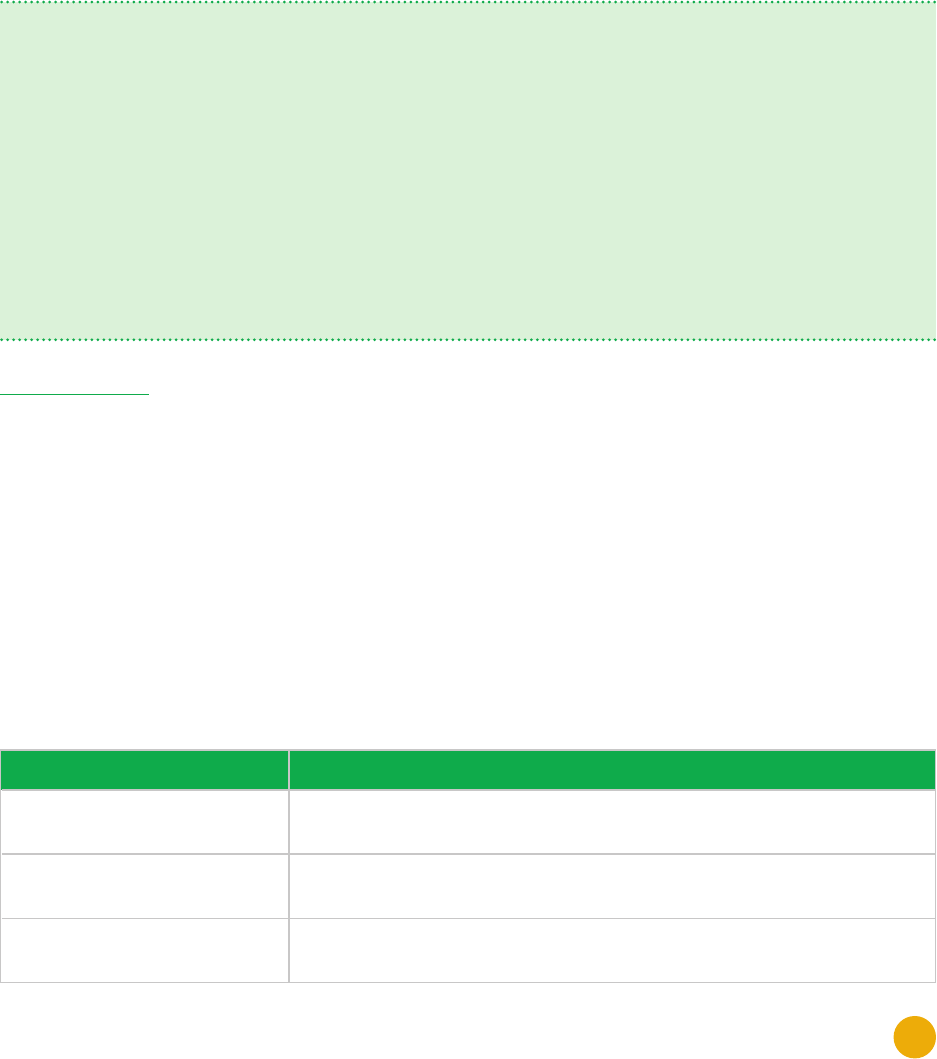
6
How do I show leadership in my project?
It isn’t a leader’s job to do everything; rather, it’s the leader’s job to make sure everything gets done. You
will demonstrate leadership by recruiting and engaging a diverse team of volunteers from your network
and around the community. Share your vision to help align your team—you can also map out activities, set
schedules, create a communication plan, and solve challenges if they arise.
Take Action projects require partnering with the community you’re serving, so be sure to enlist appropriate
individuals, groups, or organizations before, during, and after your project to ensure they are engaged with
and benet from your project. Ideally, your project will provide the community you serve with a much-
needed solution, so they will help sustain your project.
LEADERSHIP EXAMPLE: Caitlin elevated her passion for theater to raise awareness about substance
abuse issues among high school students. She reached out to her high school’s drama club for
volunteer actors and backstage crew members. She found volunteers within her Girl Scout troop to
design and distribute promotional materials for performances.
At a local drug abuse education nonprot, Caitlin learned about the extent of substance abuse in her
town and found her project advisor. Her advisor connected her with volunteer educators who informed
the educational components of Caitlin’s project and hosted talk-backs after performances. Finally,
Caitlin engaged other high school drama clubs to ensure that the program continued to reach her
target audience.
Step 3: Get Help features important members of your team and the roles they might play. When you’re
ready, visit Step 3 of GoGold to list your team members and share how you plan to lead them as you
implement your project.
What does a sustainable project look like?
Sustainability means that your project, as well as the work towards addressing your issue, carries on or
continues even after you’ve done your part and earned the Gold Award. In a nutshell: you’ll put a plan in
place that ensures your Gold Award creates lasting change.
Sustainability is not one-size-ts-all. Here are three different ways you can ensure your project is
sustainable:
Create a permanent solution ... and ensure it’s used.
Short project description How you know it’s sustained ...
Brand-new girls wrestling team
at your school
Get a letter of commitment from your school administration to sustain the
team
Cultural competency club at a
local community center
Provide a how-to manual with guidelines and your organization charter to
the community center so they can maintain your project after you wrap up
Formal-wear lending boutique
for military families
Establish a system for rotating and refreshing available items that outlasts
your support
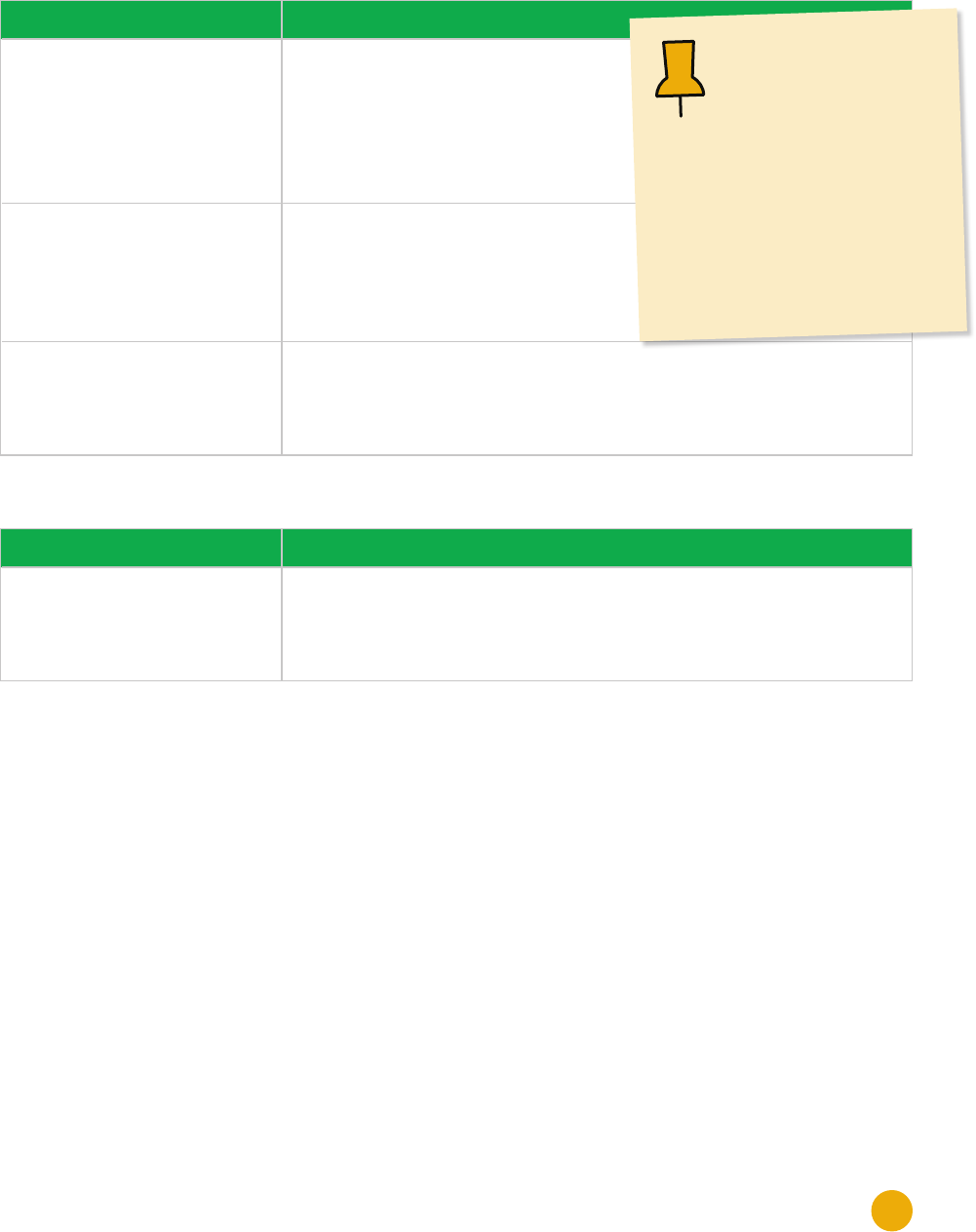
7
Educate others by inspiring them to change their attitudes, beliefs, or behaviors … and prove
the changes by using a measurement tool and either 1) putting a plan in place to continue the
education beyond your involvement or 2) enacting a call to action.
Short project description How you know it’s sustained ...
Stress-relief awareness
campaign
Collect pre- and post-surveys to
measure change in your audience’s
knowledge and perceptions and enact
a call to action, like a pledge, to track
who commits to adopting new self-
care habits
Reading workshops to promote
early literacy
Collect pre- and post-surveys to
measure how audience reading skills
improve and share the curriculum
with a community partner to continue
literacy education
School recycling presentations Collect pre- and post-surveys to measure increase in recycling know-
how and enact a call to action, like an online tracking system to count the
number of students recycling at the school and total pounds of recycled
material annually
Advocate to change a rule, regulation, or law ... and engage others in your advocacy.
Short project description How you know it’s sustained ...
Protecting sea turtle habitats Get others to take up the cause by signing a petition as part of a campaign
to enact a law that protects the animals’ habitats. Your advocacy is what
matters—bonus points if you get a law passed, but even if you don’t, you can
still change minds and behavior along the way.
Visit Step 4 GoGold to plan your project’s sustainability.
How do I measure my impact?
Your impact is measurable when you collect information or data throughout your project and use it to show
that your actions have had a positive effect on the community and/or contributed to addressing your issue.
Think about what you can count in order to measure the effectiveness of your project. This means that
you will need to set a goal or two! That way, when you measure your results, you’ll know how effective your
project was overall. Goals can feel intimidating, but remember, you’re setting them for yourself—and they
are adaptable.
You can begin demonstrating your impact by asking “how much?” or “how many?”
●You can count how many people your project helped, involved, or educated, or how many people
changed their behavior or attitudes. You can also count the number of members in a group (social
media or in person) or how may clicks, shares, views, or comments your website or posts received.
SOMETHING TO
REMEMBER:
When your
goal is to change
someone’s mind, education can be
a powerful tool. You can create and
deploy a wide range of materials
that will educate others about the
issue you care about. We call this a
“force multiplier” when someone
makes a signicant change to an
attitude and/or behavior.
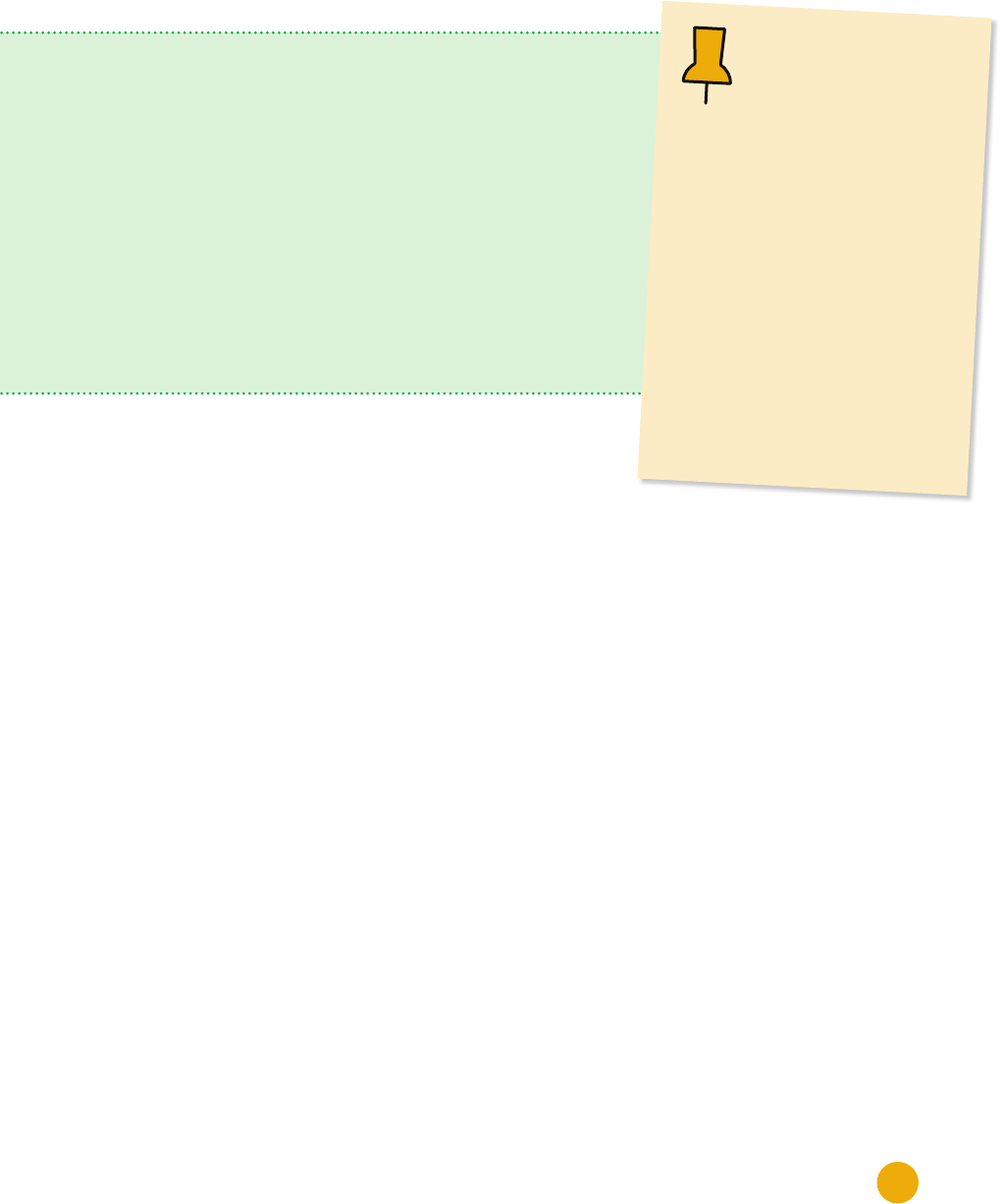
8
●If you are introducing a new concept to a group, you can use a pre- and post-questionnaire to
measure how much they’ve learned or assess what behaviors they’ve changed.
Successful Gold Award projects have goals and measure true impact. Be condent in setting and
measuring multiple goals, so you can understand the impact of each part of your project. And don’t be shy
about expanding your efforts as you go!
MEASUREMENT EXAMPLE: Nancy is creating a technology class
for women in the prison system to help prepare them for future
employment. She sets two goals: to reach 50 women in the prison
system with her technology class by the end of the school year and
to be sure at least 75% of the women feel like they have increased
their tech skills. To measure her impact, she plans to use two metrics:
she will track participation to ensure she serves at least 50 women,
and she will circulate questionnaires before and after the classes
to assess if her participants are increasing their tech skills. By
consistently tracking her progress, she can adjust her plan to
better meet her goals.
Visit Step 4 of GoGold to create your project’s goals and outline how
you’ll measure your impact.
SOMETHING TO
REMEMBER: While go
als
are important g
uidelines,
they may change as you go alo
ng.
It’s OK—it’s all part of the learning
process. Collecting and analyzing
data throughout your proje
ct will
help you gauge the impact yo
ur
project is having, make
improvements and adjust yo
ur
goals as necessary, and ultimat
ely
tell a compelling story about yo
ur
Gold Award. If you think you nee
d
to change your goals after yo
ur
proposal has been approved, rea
ch
out to your council contact for
advice and support.
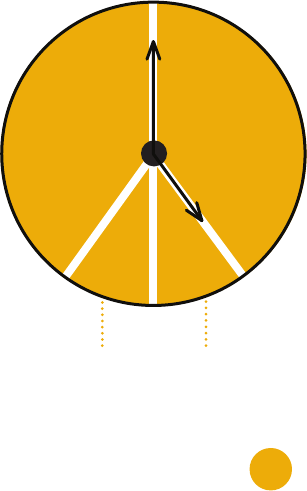
9
Now that you’ve learned about the Gold Award, you’re ready to earn it—the greatest achievement in Girl
Scouting! It may sound daunting, but we’ll break it down into smaller, more manageable steps. Read on
for more on how to get started. And remember: your council and the Girl Scout Movement will be there to
support you every step of the way!
How do I know I’m ready?
You can begin working on your Gold Award proposal in GoGold after you’ve crossed certain items off your
to-do list. You’re ready when:
●You’re in grades 9–12.
●You’re a registered Girl Scout Senior or Ambassador.
●You’ve completed two Senior or Ambassador Journeys OR have earned a Silver Award and completed
one Senior or Ambassador Journey.
●You feel compelled to do something meaningful that will make the world a better place!
How much time does it take?
Plan to spend 80 hours bringing your project to life—that’s the minimum. These hours will give you the
time you need to properly plan and execute your project—though keep in mind that your schedule and
other time commitments will inuence how long it takes to complete your project. This is OK, whatever
timeline you follow is just ne!
Use this chart—and the denitions below—as a guide to help you plan how to best invest your time for
maximum efciency and impact.
Preparation (30–50%) includes time planning pre- and post-approval.
●Pre-approval (up to 25%) is the process of preparing your
project plan before council review and approval. This includes
some research, contacting possible community partners,
investigating potential venues, nding prospective volunteers, and
ultimately completing your project proposal.
●Post-approval (up to 25%) is the work of nalizing your research
and locking in your logistics after your proposal is approved by
your council. For example, you might contact your venue and set
dates and times for workshops.
Implementation (30–50%) is the process of leading and executing
the plan you dened in your project proposal and making changes,
when necessary, to achieve the project’s goal. This includes training
your volunteers, leading your team to do your project, and more!
Part 2: Achieving Your Gold Award
Final report
& thanks
5–10%
Earning
money
5–10%
Implementation
30–50%
Preparation
30–50%
BUDGET YOUR HOURS

10
Earning money (5–10%) is optional, and only includes time you spend earning money for your Gold Award.
Final report & thanks (5–10%) includes reecting on your impact and appreciating your team, which are
essential parts of the Gold Award, so make these a priority as you wrap up.
It’s easy to forget an activity, email, or conversation, so use the “Track My Work” tab in GoGold to make
sure you don’t miss a thing.
What is the GoGold web app?
GoGold is a mobile-friendly web app you will use to track your progress towards completing the seven
steps of the Gold Award—from idea to proposal, to taking action and nal report—online!
You can use GoGold to brainstorm and submit your ofcial Gold Award proposal as well as your
nal report. This system is designed with you in mind. It offers a lot more than just a place to upload
documents.
GoGold takes you through each of the Gold Award steps while offering new ways to examine the issue
you want to work on and its root causes, plan your project, set goals, map a timeline, and add your team
members.
The functionality built into GoGold is going to save you time, too. The system includes options for your
troop leader to virtually sign off on your prerequisites, like your completed Journeys or Silver Award, and for
your project advisor to verify your proposal is ready for your council’s review process. (We will tell you more
about the role of a project advisor in Step 3.)
Think of GoGold as an interactive, informative, and enormous ling cabinet up in the cloud—where every
single Gold Award proposal and nal report is proudly safeguarded and catalogued for all the Girl Scouts
who are on this amazing journey.

11
What are the #1 tips to help me succeed?
DO THIS NOT THIS
Pull a team of volunteers together and put your
leadership skills to work.
Do it all yourself with just a few or no volunteers.
Choose a project advisor who is an expert on your
issue and willing to be involved.
Choose a parent or troop leader as an advisor.
Plan ahead and anticipate obstacles. Wing it without a plan.
Break up your work into small, manageable bundles
and assign each bundle a timeline.
Procrastinate or try to do it all at once.
Update your project advisor and council contact and
ask questions when needed.
Keep project progress, obstacles, and details to
yourself until you submit your nal report.
Document everything as it occurs so that the
information you collect is accurate and honest.
Make up a timeline after you’ve nished the project or
put together several small projects.
Measure your project’s outcome—you can always
look to your council contact for guidance on collecting
data, conducting surveys, and doing pre- and post-
evaluations.
Complete your project with no real way to measure
the impact you’ve made.
Make sure your project includes the ve Gold Award
elements.
Submit your project proposal without addressing
root cause or including a national and/or global link,
sustainability, measurability, or leadership.
Include detailed goals in your project proposal that
show your anticipated impact.
Skip goal setting.
Do research to make sure any organizations you plan
to work with want to sustain your project.
Assume that organizations need your help.
Create a dynamic project with measurable impact on
a community.
Create a static website as the focus of your project or
hold a one-day workshop.
Be original—this is your chance to shine! Copy what others have done.

12
What are the seven steps to the Gold Award?
▶ Step 1: Choose an issue
▶ Step 2: Investigate
▶ Step 3: Get help
▶ Step 4: Create a plan
▶ Step 5: Present your plan
▶ Step 6: Take action
▶ Step 7: Educate and inspire
Let’s break it down with a description of each step and tips for success. You’ll complete these steps using
GoGold. When you’re ready, create a GoGold account and get started!
Step 1: Choose an issue
In this step, you’ll answer questions that will help you reect on your personal values, education,
experience, and interests in order to nd an issue you care about.
Use the interactive question tree in GoGold to answer a series of questions that will help you explore how
to merge your passions and skills to take action. It’s easy! Simply answer the questions and GoGold will do
the rest, compiling your responses into project themes that may interest you.
Why? Who? Where? What? How?
Why are you
inspired? Do you
care about poverty,
women’s rights,
environmental
sustainability, health
and relationships,
animals, human
rights, veterans,
sports, or something
else?
Who do you want
to help? The elderly,
children, those
less fortunate,
nature, people
with disabilities, or
animals?
Where do you want
to make an impact?
Your school,
neighborhood, city,
state, country, or
around the world?
What are your
strengths and
talents? Public
speaking, math,
community building,
empathy, research,
or people skills?
How do you want to
make a difference?
Will you change a
law, lead workshops,
start a club, develop
curriculum, give
presentations, teach
a skill, or take action
another way?
You can complete the quiz as many times as you want. And you’ll leave the step with an issue or two you
may want to explore further.
Step 2: Investigate
In Step 1, you identied a community issue or two that you’re interested in exploring further. You’ll need to
trace back the issues to their root causes for your project and then connect with issue experts to plan your
project. By addressing the root causes of your issue and involving your community in the solution, you’ll be
primed to make a sustainable impact.
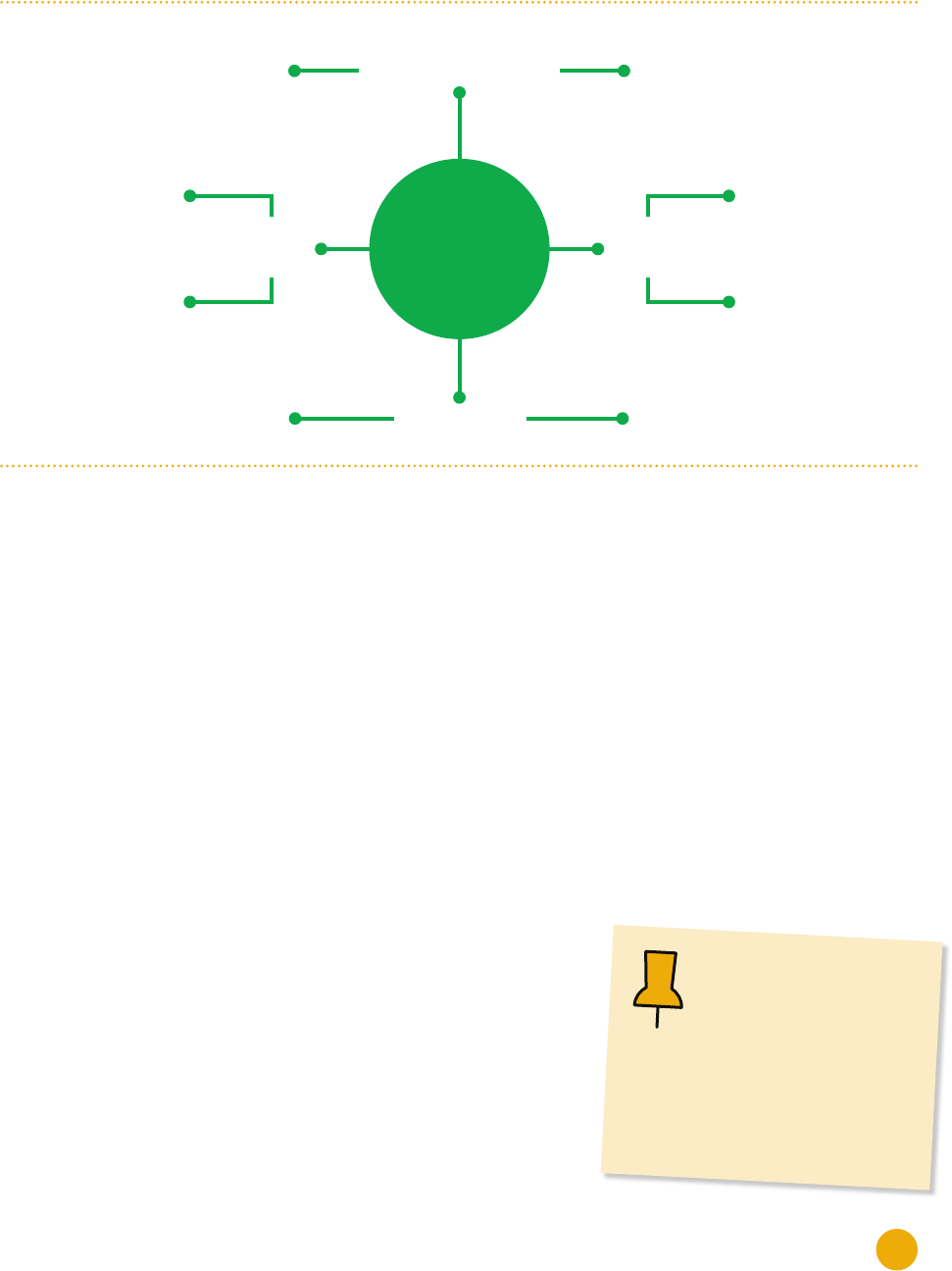
13
Start by using a mind-mapping tool to explore the root causes of the issue you’ve chosen. Here’s an
example mind map:
LACK OF
ARTS
EDUCATION
IN SCHOOLS
Curriculum structure
Public policy
Funding
Public
perception
No local policy protecting
arts programs in schools
No state laws protecting
arts programs in schools
Missed opportunity to combine
community/school resources
into extracurricular programs
Many schools don’t integrate
the arts into STEM (Science,
Technology, Engineering,
and Math) programs
Often not included
in school budgets
Not enough
awareness about
its proven benets
Missed
opportunities
for community
partnerships
Not enough
awareness about
career opportunities
in the arts
Notice that the community issue “lack of arts education in schools” is placed in the center and that things
that trigger it, like funding, public policy, public perception, and curriculum structure are explored further.
When you explore further, you nd root causes. In this example, the root causes are in the outer prongs. For
example, the root causes of the public’s perception of lack of arts education in schools include not enough
awareness about proven benets and not enough awareness about career opportunities in the arts.
Once you’ve identied root causes, take your research further to make sure:
●You’ve identied a real need in the community.
●You can make your project idea happen—it’s realistic.
●You can learn about resources and develop a network beyond your friends and family to help you.
Get online. Check news and organizations’ sites related to your issue. Explore how the media in other
countries cover your issue.
Get reading. Find books that offer in-depth analysis of your issue, read your local newspaper, and look for
magazine articles that offer different perspectives.
Interview experts. Talk to friends, neighbors, teachers, business
owners, community partners, and others who can offer information
or insight about the issue you’ve chosen.
Need help identifying organizations or people who have
knowledge of your issue or nding an expert to interview?
Click the help icon next to the “Research” tab in GoGold for
suggestions, including a community map, a short list of thought
starters, and interview tips.
SOMETHING TO
REMEMBER:
Before you
meet with new people, get
safety tips from your troop/group
volunteer and always make sure
your family knows who you’re
talking to or meeting with—safety
rst!
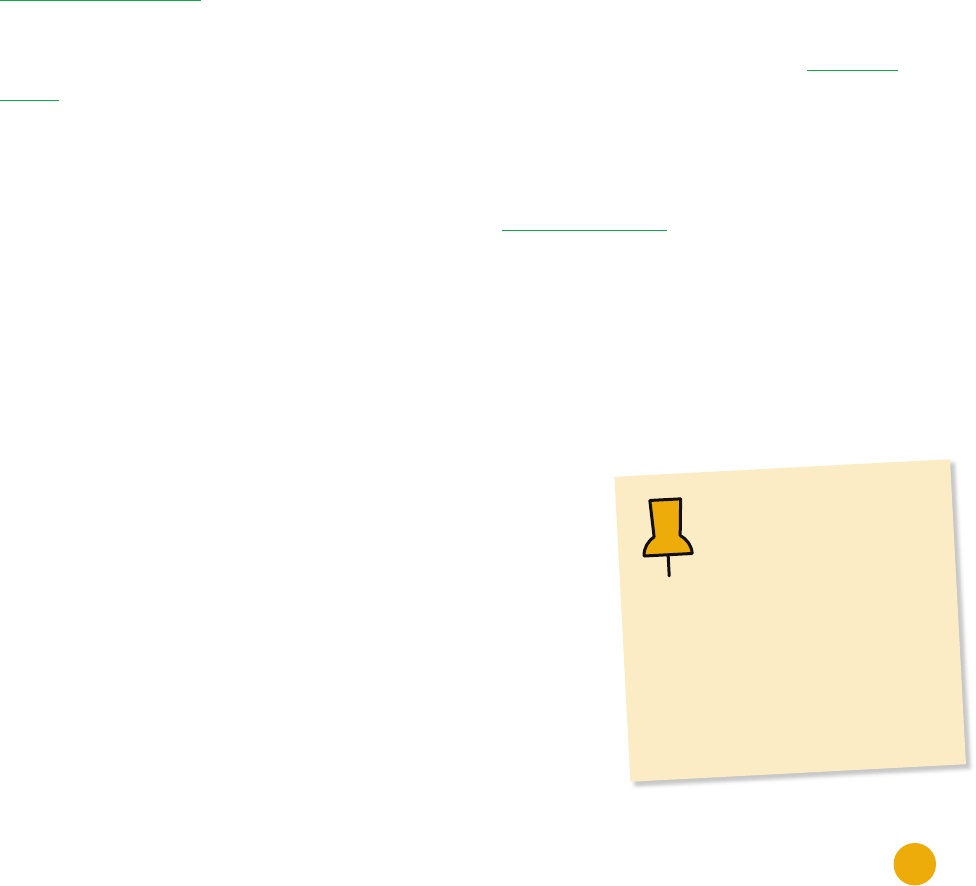
14
Step 3: Get help
In Step 3, you’ll form a team of volunteers. Working together to put your plans into action allows you to ex
your leadership muscle and make a bigger impact than you would on your own. Anyone can be on your
team—you don’t need to limit yourself to just people your age or those who are Girl Scouts. But do choose
a diverse group of volunteers with different skill sets who will work to put your project into action and stick
it out until you’re done.
Here are some important members of your team:
Your project advisor is an adult you approach and invite to be on your team, who has some level of
expertise in one or more areas of the issue your project addresses. Think of your project advisor as a
professional consultant; they can guide you as you plan and implement your project. The project advisor
does not design your project but does offer valuable insight, advice, and guidance.
Parents/guardians and troop volunteers cannot be project advisors. Sometimes adult siblings or family
members such as aunts or uncles can be approved project advisors if they are experts on your issue.
However, we strongly encourage you to reach outside your familiar circle and grow your network. The
Project Advisor Guide will help your advisor understand their role and how they can support you.
Parents or guardians are amazing supporters! They can act as cheerleaders, sounding boards, and
chauffeurs. They can also help you out with safety, transportation, and travel guidelines. The Guide for
Adults lists helpful ways your parents or caregivers can help you; however, as we said above: parents/
guardians cannot act as your project advisor.
Troop volunteers and individually registered member mentors can help make sure you’ve met Gold
Award prerequisites and may also agree to be a part of your volunteer team. They can also review Gold
Award funding, safety, and travel guidelines with you. The Guide for Leaders will get them started!
Friends and family may want to help you implement your plan. Troop sisters, relatives, friends, siblings,
and cousins can all make terric team members. Feel condent about giving them hands-on roles and
delegating tasks to them, too!
Use Step 3 of GoGold to keep a list of your conrmed team members. You’re required to work with at
least one adult volunteer—your project advisor, so be sure to list them rst. Then, add at least three to ve
additional team members who are not your parent/guardian or troop volunteer. From there, you can add as
many others as you’d like!
Keep in mind that a good leader identies specic team members
with varied backgrounds and skill sets to assist with specic tasks
associated with their project. While you may be inclined to primarily
enlist your peers, adult support can help you form partnerships
with organizations, access resources, and provide important safety
measures (your council can help make sure you’re covered). So, be
ready to identify each volunteer’s role and don’t worry about missing
someone—you can add more team members as you go along.
SOMETHING TO
REMEMBER:
When you
expand your circle, you
expand your impact. You may feel
a little bit uneasy to approach and
invite those outside your network
to join your team, but remember to
use your proposal as your guide to
explain your plans. Chances are—
they will be impressed!

15
Step 4: Create a plan
In Step 4, you’ll bring together the work and research you did in Steps 1–3 to show how you will achieve
your project’s purpose. You’ll work out the specic details of your project proposal, including a project
description, proposed budget and timeline, and your thoughts on how the project will impact you, your
target audience, and your wider community. You’ll also dene your project’s national and/or global link, set
goals to measure your impact, and plan how you’ll sustain your project (refer back to Part 1 for a refresher).
Provide as much detail as you can so your council can evaluate your timeline and proposed scope of
work. Ensure you’ve clearly articulated your ideas and plans, identied your team, set clear goals, and
determined how your impact will be measured so it can be easily understood and evaluated. The people
reviewing your proposal may not know you personally; be specic so your vision is clear to them.
Step 5: Present your plan
You’ll know you’re ready to submit your proposal to your council for review and approval when you can
condently check all the boxes below:
ǓYou’ve met the prerequisites (see “How do I know I’m ready?”)
ǓYou’ve created a unique project
ǓYou’ve chosen an expert project advisor (Step 3: Get Help)
ǓYou’ve engaged a team of volunteers who will take action with you
ǓYou’ve addressed the root cause of an issue
ǓYou’ve tackled your target audience’s needs
ǓYou’ve set clear goals. You can say, “Here is the change I plan to make, and here’s how I’ll know I’ve
made it.”
ǓYou’ve designed a sustainable project
ǓYou’ve identied a national and/or global link
ǓYou’ve developed a realistic budget and identied the resources you need to carry out the project
ǓYour project will take at least 80 hours to complete
ǓYou have the skills to get started
ǓYou’ve created a plan to inspire others about your project and its impact
Before you submit, be sure to upload any additional les your council requires and download a copy of
your proposal to keep for your records. Then, get your troop leader/volunteer to verify that you completed
your prerequisites and obtain project advisor support of your proposal before submitting it. You’ll be able
to use GoGold to send an email request for verication that they can complete online in just a few clicks.
Your council will have a specic review and approval process, so be sure to check in with them for next
steps. Find your council.

16
Step 6: Take action
Once your proposal is approved, it’s go time! Lead your team to carry out your plan. Log your hours and
track your income and expenses as you put your proposal into action. Use the Experience Log to upload
photos, videos, and/or text posts showing your project in action. These posts will be shared with your
council when you submit your nal report in Step 7.
Check the “Summary” tab in Step 6 of GoGold for an overview at any time.
Step 7: Educate and inspire
By Step 7, you’re in the home stretch and completing your nal report. It’s time to tell your story—to tell
others what you did, what you learned, and the impact your project had on your target audience. This is
your chance to shine, so be sure to fully reect on each question and provide thoughtful, detailed answers.
Upload any les and download a copy of your nal report for your records. You’ll obtain project advisor
verication for the great work you completed and then submit to your council for review and approval.
As when you submit your proposal to your council at Step 5, your council will have a specic review and
approval process for Step 7, so be sure to check in with them for next steps. Find your council.
When your nal report is approved, you’re ofcially a Gold Award Girl Scout.
Celebrate and be sure to thank your project advisor, your team, and all the other people who helped you
along the way!
Congratulations—you’re a Gold Award Girl Scout!
You’ve earned the Gold Award, the most highly regarded award in the world for girls. It’s the mark of the
truly remarkable. Becoming a Gold Award Girl Scout marks an important milestone in your Girl Scout
career. The same vision, commitment, and leadership that brought you through the Gold Award process
will now carry you to new heights. This will distinguish you on scholarship applications, college admission
essays, and on your résumé—forever. What you have earned will set you apart, in all the best possible ways!
In addition to accomplishing this challenging personal goal, you can now join an esteemed group of Girl
Scouts who share this distinction.
From its beginning in 1916, the greatest achievement in Girl Scouting has been a symbol of excellence
and leadership that recognizes the extraordinary efforts of extraordinary girls. While the Gold Award has
gone by many names, now all Girl Scouts who earned the First Class, Curved Bar, Golden Eaglet, or Golden
Eagle of Merit are part of the Gold Award Girl Scout Family (see GSUSA’s proclamation). Its timelessness
has inspired generations of young women to nd greatness inside themselves and share their ideas and
passions with their communities and the world. Congratulations on joining this network of talented and
inspirational women!
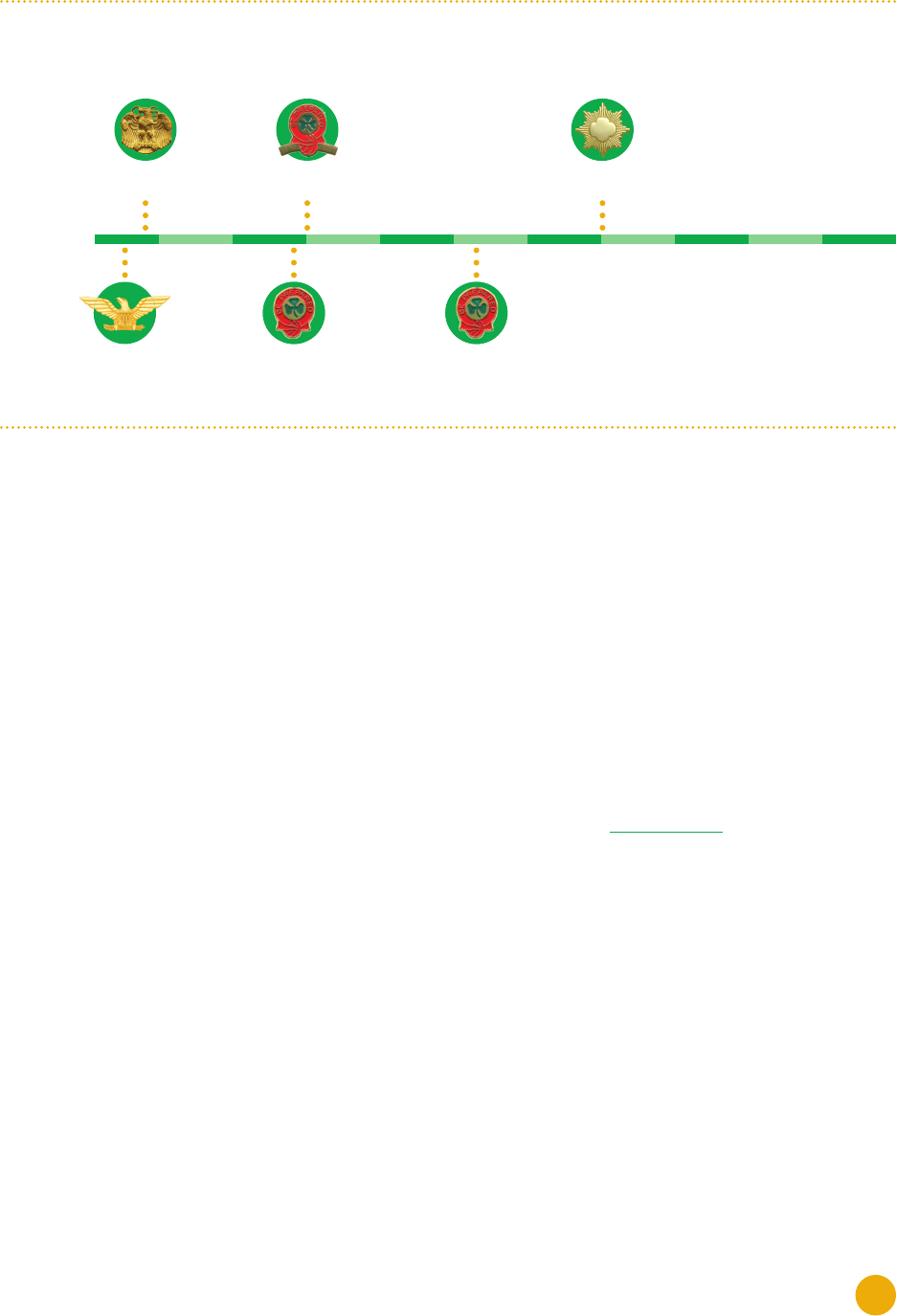
17
YOU’VE JOINED HISTORY—WELCOME TO THE
GOLD AWARD GIRL SCOUT FAMILY!
1916–1918
Golden Eagle
of Merit
1918-1938
Golden Eaglet
1938-1940
First Class
1940-1963
Curved Bar
1963-1980
First Class
1980-Present
Girl Scout Gold Award
1912
Juliette
Gordon Low
founds
Girl Scouts
Share your accomplishment with the world!
How many other teenagers can say they led a team that tackled an issue in their community to create
lasting change? We know you can say it! You stand out in a crowd—own it!
Now that you’re a Gold Award Girl Scout, it’s time to leverage your accomplishment and share your passion:
●Capture the skills you gained. Remember all the things you learned while earning the Gold Award.
Things like project management, team building, public speaking, and resource development are real-
life skills that need to be highlighted. Make sure you add your new skills and competencies to your
future applications and résumés.
●Apply for scholarships. When applying for scholarships (and you should be!), you’ll want your Gold
Award to be a highlight. The work that goes into earning it will show you as a well-rounded, community-
minded, forward-focused can-doer! Be sure to review these specic scholarships designed just for
Gold Award Girl Scouts.
●Expand your network. Think of all the people you met and engaged with while working towards the
Gold Award. Keep all those contacts and add them to your professional social media accounts, like
LinkedIn, whenever possible. Those individuals will be proud to be connected to you, and the Girl Scout
Gold Award, forever.
●Get paid more. If you join the military, you can enlist at a higher pay grade.
●Get the job. Highlight your Gold Award on your résumé—as well as all of the skills you gained while
earning it. Don’t underestimate the power of a Girl Scout alum, or sister Gold Award Girl Scout,
receiving your résumé or application!

18
RÉSUMÉ TIPS:
Describe what the Gold Award means for anyone who may not be familiar with it (ideally one sentence
or less). For example:
●Earned the Girl Scout Gold Award by planning and executing an 80-hour service-learning project and
managing a team of volunteers and community partners
Quantify, quantify, quantify! Include measurable outcomes from your project to tell about your
leadership experience and impact. Instead of saying:
●Developed a robotics program for girls
Try something more powerful, like:
●Created a robotics curriculum that reached 80 girls—90% of whom reported an increased interest in
STEM careers
●Partnered with two school districts to add the curriculum to 10 school clubs
●Implemented a social media strategy to educate girls on STEM opportunities, achieving more than
5,000 impressions in total
List skills that you developed in pursuing your Gold Award. Shine a light on transferable skills like
project management, communication, strategic planning, research, budget oversight, fundraising, team
building, and social media marketing.
Elevate your online story. If you created a website as part of your Gold Award, consider adding a link. You
can use a free URL shortener to make the link memorable.

19
Our resource roundup for Girl Scouts
Here you’ll nd a roundup of internet resources that will help you become a Gold Award Girl Scout. We
recommend referencing this list as you work on your project, then again once you’re ofcially a Gold Award
Girl Scout.
Building a Team and Network
The Gold Award Guide for Project Advisors
The Gold Award Guide for Adults
The Gold Award Guide for Troop Leaders
Designing and Carrying Out a Project: Gold Award Girl Scouts Share their Wisdom on YouTube
Go for the Gold—Tips from Gold Award Girl Scouts
Ready To Get Started?
Create a GoGold Account
FAQs (GoGold Account Required)
You’re a Gold Award Girl Scout! What’s Next?
Search the Scholarship Database for Opportunities for Gold Award Girl Scouts
Share your Project on the Girls Changing the World Map
Get your Gold Award Credential
A special thank you to Girl Scouts San Diego for creating the guide that inspired this national template
and to the 2020 Highest Award Council Thought Partners—Girl Scouts of Alaska, Girl Scouts of Central
Texas, Girl Scouts of Connecticut, Girl Scouts of Nassau County, Girl Scouts Northeast Texas, Girl Scouts
of Northern Illinois, Girl Scouts of San Gorgonio, Girl Scouts of Southeast Florida, Girl Scouts of Maine,
and Girl Scouts of Western Ohio—for informing the updated Gold Award Guidelines for our Movement at
every step.

20
Girl Scouts of Alaska
Girl Scouts-Arizona Cactus-Pine Council, Inc.
Girl Scouts of Black Diamond Council, Inc.
Girl Scouts of California’s Central Coast
Caribe Girl Scout Council, Inc.
Girl Scouts Carolinas Peaks to Piedmont, Inc.
Girl Scouts of Central & Southern New Jersey, Inc.
Girl Scouts of Central and Western
Massachusetts, Inc.
Girl Scouts of Central California South
Girl Scouts of Central Illinois, Inc.
Girl Scouts of Central Indiana, Inc.
Girl Scouts of Central Maryland, Inc.
Girl Scouts of Central Texas, Inc.
Girl Scouts of the Chesapeake Bay Council, Inc.
Girl Scouts of Citrus Council, Inc.
Girl Scout Council of Colonial Coast
Girl Scouts of Colorado
Girl Scout Commonwealth Council of Virginia, Inc.
Girl Scouts of Connecticut, Inc.
Girl Scouts - Dakota Horizons, Inc.
Girl Scouts of the Desert Southwest - Southern
New Mexico & West Texas, Inc.
Girl Scouts - Diamonds of Arkansas, Oklahoma
and Texas
Girl Scouts of Eastern Iowa and Western Illinois,
Inc.
Girl Scouts of Eastern Massachusetts, Inc.
Girl Scouts of Eastern Missouri, Inc.
Girl Scouts of Eastern Oklahoma, Inc.
Girl Scouts of Eastern Pennsylvania, Inc.
Girl Scouts of Eastern South Carolina, Inc.
Girl Scouts of Eastern Washington & Northern
Idaho
Girl Scouts Farthest North Council—no link available
Girl Scouts of Gateway Council, Inc.
Girl Scouts of Greater Atlanta, Inc.
Girl Scouts of Greater Chicago and Northwest
Indiana, Inc.
Girl Scouts of Greater Iowa
Girl Scouts of Greater Los Angeles
Girl Scouts of Greater Mississippi, Inc.
Girl Scout Council of Greater New York, Inc.
Girl Scouts of Greater South Texas
Girl Scouts of the Green and White Mountains
Girl Scouts of Gulfcoast Florida, Inc.
Girl Scouts of Hawai`i
Girl Scouts Heart of Central California
Girl Scouts Heart of Michigan
Girl Scouts Heart of New Jersey, Inc.
Girl Scouts in the Heart of Pennsylvania, Inc.
Girl Scouts Heart of the Hudson, Inc.
Girl Scouts Heart of the South
Girl Scouts of Historic Georgia, Inc.
Girl Scouts, Hornets’ Nest Council
Girl Scouts of the Jersey Shore, Inc.
Girl Scouts of Kansas Heartland, Inc.
Girl Scouts of Kentuckiana, Inc.
Girl Scouts of Kentucky’s Wilderness Road
Council, Inc.
Find your council’s Gold Award page
SOMETHING TO REMEMBER: Council Gold
Award guidelines and processes may vary.
Check the Gold Award page on your council’s
site for details. Not sure of your council’s ofcial name?
Use our Council-Finder to look it up by zip code.

21
Girl Scouts Louisiana East, Inc.
Girl Scouts of Louisiana-Pines to the Gulf
Girl Scouts of Maine, Inc.
Girl Scouts of Manitou Council, Inc.
Girl Scouts of Michigan Shore to Shore
Girl Scouts of Middle Tennessee, Inc.
Girl Scouts of Minnesota and Wisconsin Lakes
and Pines
Girl Scouts of Minnesota and Wisconsin River
Valleys, Inc.
Girl Scouts of the Missouri Heartland, Inc.
Girl Scouts of Montana and Wyoming
Girl Scouts of Nassau County, Inc.
Girl Scout Council of the Nation’s Capital
Girl Scouts of New Mexico Trails, Inc.
Girl Scouts - North Carolina Coastal Pines, Inc.
Girl Scouts of North East Ohio
Girl Scouts of North-Central Alabama, Inc.
Girl Scouts of Northeast Kansas and Northwest
Missouri, Inc.
Girl Scouts of Northeast Texas
Girl Scouts of Northeastern New York, Inc.
Girl Scouts of Northern California
Girl Scouts of Northern Illinois
Girl Scouts of Northern Indiana-Michiana, Inc.
Girl Scouts of Northern New Jersey, Inc.
Girl Scouts of the Northwestern Great Lakes,
Inc.
Girl Scouts of NYPENN Pathways, Inc.
Girl Scouts of Ohio’s Heartland Council, Inc.
Girl Scouts of Orange County
Girl Scouts of Oregon and Southwest
Washington, Inc.
Girl Scouts San Diego
Girl Scouts of San Gorgonio Council
Girl Scouts of San Jacinto Council
Girl Scouts of the Sierra Nevada
Girl Scouts of Silver Sage Council, Inc.
Girl Scouts of South Carolina-Mountains to
Midlands, Inc.
Girl Scouts of Southeast Florida, Inc.
Girl Scouts of Southeastern Michigan
Girl Scouts of Southeastern New England
Girl Scouts of Southern Alabama, Inc.
Girl Scout Council of the Southern
Appalachians, Inc.
Girl Scouts of Southern Arizona
Girl Scouts of Southern Illinois
Girl Scouts of Southern Nevada, Inc.
Girl Scouts of Southwest Indiana, Inc.
Girl Scouts of Southwest Texas
Girl Scouts - Spirit of Nebraska
Girl Scouts of Suffolk County, Inc.
Girl Scouts of Texas Oklahoma Plains, Inc.
Girl Scout Council of Tropical Florida, Inc.
USA Girl Scouts Overseas
Girl Scouts of Utah
Girl Scouts of Virginia Skyline Council, Inc.
Girl Scouts of West Central Florida, Inc.
Girl Scouts of Western New York, Inc.
Girl Scouts of Western Ohio
Girl Scouts - Western Oklahoma, Inc.
Girl Scouts Western Pennsylvania
Girl Scouts of Western Washington
Girl Scouts of Wisconsin - Badgerland Council,
Inc.
Girl Scouts of Wisconsin Southeast
